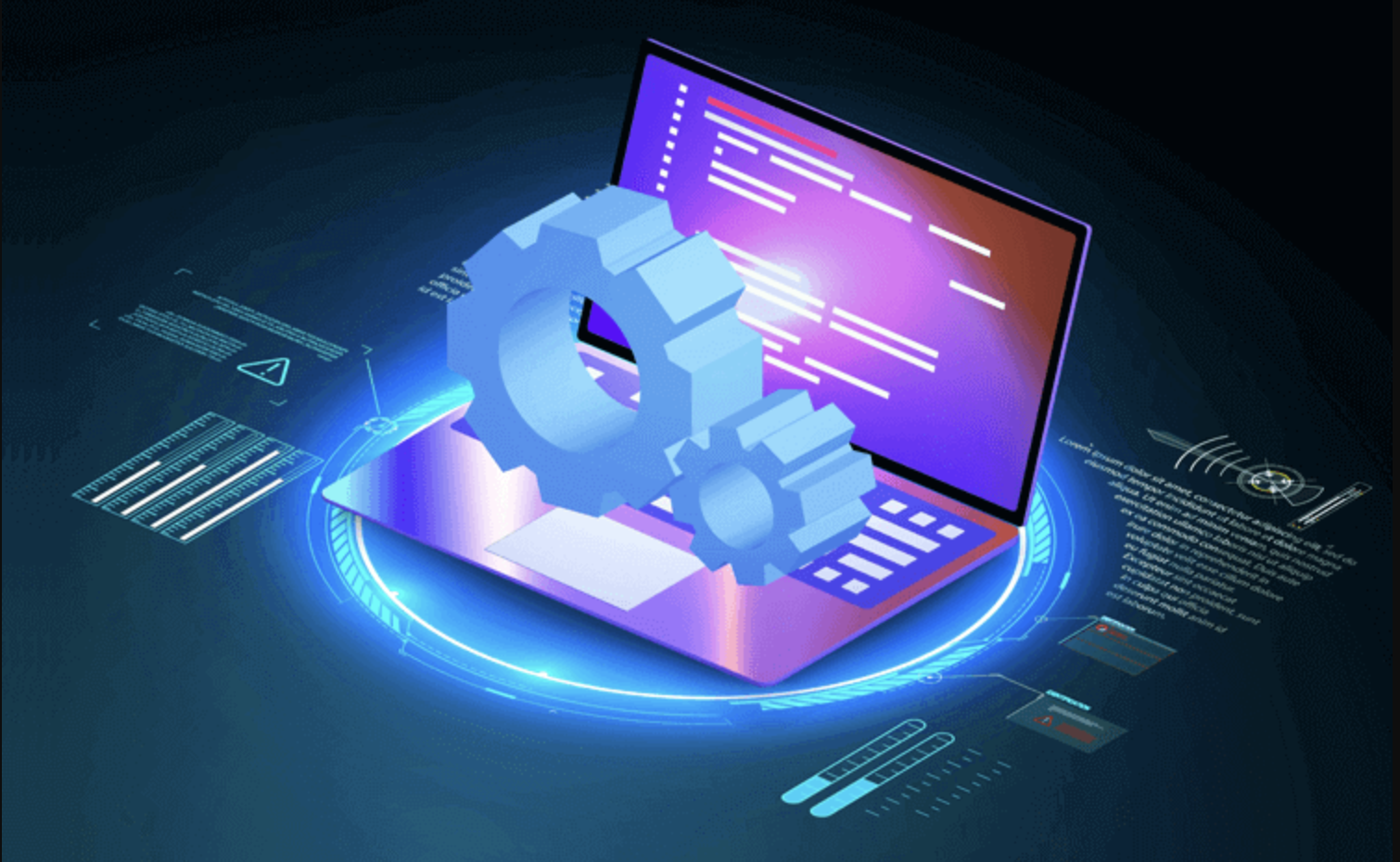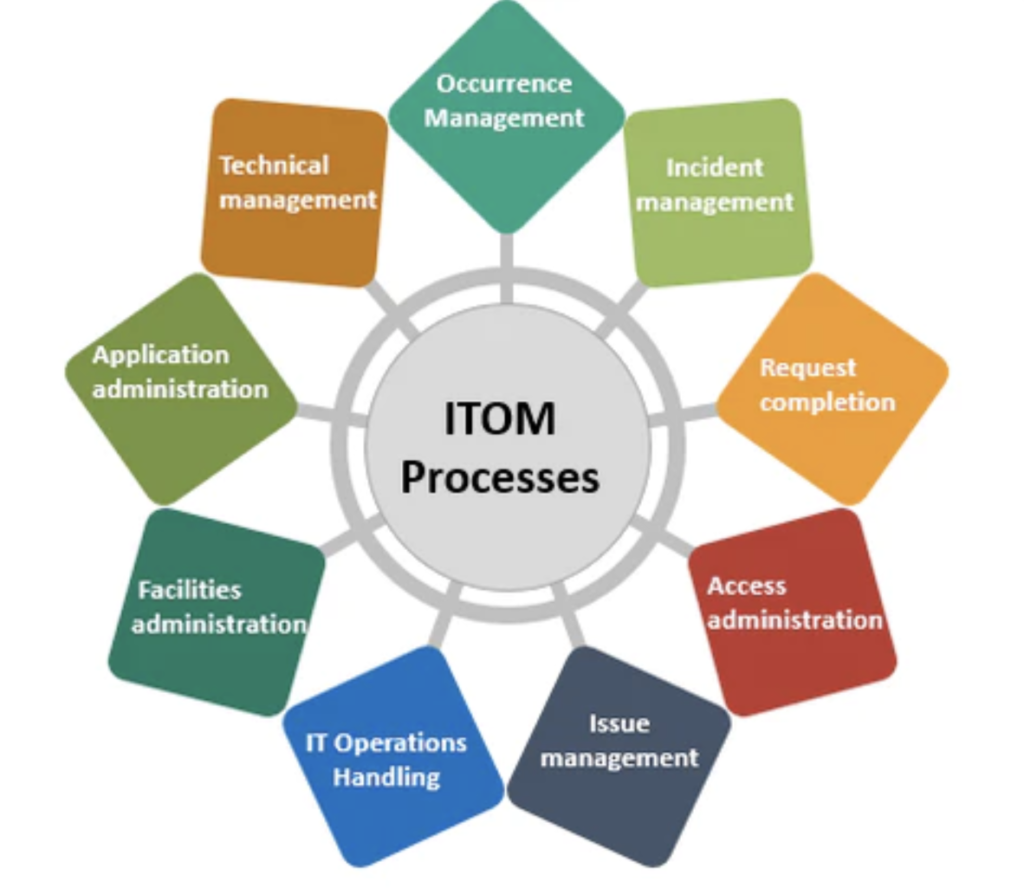
ITOM Roles and Responsibilities (Image by GIVA)

ITOM Roles and Responsibilities (Image by GIVA)
IT operations management roles and responsibilities are the cornerstone in ensuring the seamless functioning of intricate IT environments.
IT operations management (ITOM) involves managing, maintaining, and supporting an organization’s IT infrastructure.
This encompasses various activities, from system administration, service, and security management to software and hardware deployment.
Moreover, ITOM is not restricted to merely managing existing infrastructure. It plays a critical role in strategic planning and management of IT investments, coordinating with various stakeholders for alignment with business objectives.
In the case of Managed Service Providers (MSPs), ITOM takes an expanded role. It involves proactive monitoring, incident management, and performance optimization.
This improves client satisfaction and operational efficiency and opens new avenues for scalability and growth.
On the other hand, we have IT Service Management (ITSM), which focuses more on delivering and managing IT services to meet business needs. ITOM and ITSM are closely related but different areas in the broader scope of IT management.
Thus, ITOM is more than just a support function; it’s a strategic partner in an organization’s success, harmonizing technological capabilities with business objectives. This is why we will discuss ITOM roles and responsibilities with you here.
The importance of each role in IT Operations Management is described below. Together, these roles provide the efficiency, security, and alignment of IT services with business goals that form the foundation upon which modern organizations operate and thrive.
An IT operations manager ensures the smooth functioning of an organization’s IT infrastructure.
This role encompasses a broad range of responsibilities, such as overseeing the maintenance of operational infrastructure, including servers, applications, and data storage resources.
They are also responsible for coordinating and monitoring IT services, ensuring they meet business requirements.
Additionally, they are crucial in planning and managing IT investments and collaborating with other departments like finance and software development.
Assessing and reporting on IT performance is another crucial aspect of their job, ensuring that IT systems continually align with business needs.
NOC Analysts monitor network performance, identify and troubleshoot issues, and escalate problems when necessary. Their role is central to ensuring the IT infrastructure operates efficiently and effectively.
They are the first line of defense in detecting and addressing network anomalies and ensuring the stability of the organization’s network infrastructure.
This role is crucial for maintaining continuous network availability and performance for any modern business’s operations.
System Administrators are responsible for computer systems’ maintenance, configuration, and reliable operation.
Their duties include maintaining networks and computer systems, installing and upgrading software, implementing security measures, and monitoring system performance. They also handle troubleshooting issues and provide technical support.
System Administrators often train users on the systems they manage and are responsible for managing user accounts and monitoring user activities.
This role is essential in maintaining the overall health and efficiency of an organization’s IT systems.
IT Support Specialists provide technical assistance and resolve IT-related issues for end-users. They are crucial in ensuring that employees can effectively use and rely on IT systems for their daily work.
IT Support Specialists use tools like help desk platforms and ticketing systems to respond to user requests, troubleshoot problems, and offer guidance on using IT systems efficiently.
Their role is central to maintaining high user satisfaction and productivity within the organization.
The core responsibilities are integral to maintaining the operational health and security of an organization’s IT infrastructure.
They keep IT systems functioning efficiently, adaptable to changing needs and secure against evolving threats.
In IT Operations Management (ITOM), incident management maintains business continuity. This process involves swiftly identifying, analyzing, and resolving incidents to minimize their impact.
An effective incident management strategy will ensure IT service disruptions are dealt with quickly, that normal service operations are restored, and that potential damage to business processes is prevented.
Effective incident management deals with immediate issues and contributes to organizational learning and continuous improvement.
For more insight and to learn more, read our in-depth article on IT Incident Management.
Change management within ITOM is about ensuring the delivery of changes to IT systems in a controlled and coordinated manner.
This includes everything from minor updates to major system overhauls. IT operations teams manage these changes, ensuring they don’t disrupt business activities.
Proper change management requires careful planning, testing, and communication to ensure that changes improve system performance without causing unforeseen problems.
This process is critical for maintaining the integrity and stability of IT systems in a dynamic technological environment.

Monitoring and optimizing the performance of IT infrastructure is a crucial responsibility in ITOM. This involves continuous surveillance of IT systems to ensure they operate at peak efficiency.
Regularly analyzing performance data, IT operations teams can identify and address potential issues before they escalate. This proactive approach ensures reliable system performance, essential for business continuity.
Furthermore, performance optimization involves fine-tuning systems to meet evolving business requirements, ensuring that the IT infrastructure supports and enhances business objectives.
In today’s digital landscape, IT operations must prioritize security management to protect organizational data and IT infrastructure from cyber threats.
This includes implementing robust security measures, monitoring security breaches, and responding promptly to security incidents.
Effective security management in ITOM involves a blend of technological solutions and strategic planning to safeguard sensitive information and maintain system integrity.
In our article on IT Security Management, we explore a comprehensive approach to managing IT security, including best practices and the details of the components.
Collaboration among IT departments, particularly between operations, development, and security teams, is fundamental to the efficient and secure functioning of the IT infrastructure.
Efficient operations, rapid development, and robust security in the evolving digital landscape require collaborative efforts with shared responsibilities and constant communication.
Collaboration between IT operations and development teams is embodied in the DevOps philosophy. This approach fosters a culture of seamless integration between development (Dev) and operations (Ops) teams, emphasizing continuous communication, integration, automation, and close cooperation.
The goal is to accelerate the development process, improve deployment frequency, and achieve faster time to market while maintaining service stability and quality.
This coordination is essential in the current fast-paced digital environment, where the ability to release applications quickly and update them can be a significant competitive advantage.
The collaboration between IT operations and IT security teams is for maintaining a secure IT environment. IT operations teams are typically responsible for the day-to-day management of the IT infrastructure, while IT security teams focus on protecting this infrastructure from threats and vulnerabilities.
The collaboration involves shared responsibilities, such as implementing security measures, conducting regular security assessments, and responding to security incidents.
Effective communication and joint efforts between these teams are vital for proactive security management, ensuring that security is integrated into every aspect of IT operations and not treated as an afterthought.
In the vibrant world of IT Operations Management, we find a realm where technology meets strategy and efficiency partners with innovation.
Let’s be clear: ITOM isn’t just about keeping systems running; it’s the art of ensuring these systems drive business forward.
From the strategic insight of IT operations managers to the frontline vigilance of NOC Analysts, each role is a critical cog in a giant machine.
System Administrators and IT Support Specialists are the unsung heroes, ensuring seamless day-to-day operations and user satisfaction.
But it’s not just about individual roles. The essence of ITOM lies in the collaborative action between incident and change management, performance optimization, and security.
This collaborative act is the heartbeat of IT infrastructure, keeping it alive, robust, and responsive in a rapidly evolving digital landscape.
In closing, ITOM is more than a set of tasks; it’s a dynamic field where every action and every role contributes to an organization’s technological health and strategic prowess.
Understanding and optimizing these roles isn’t just an IT goal; it’s a cornerstone for business success in the digital age.
So, let’s embrace the challenge and let ITOM be your guiding force toward a brighter, more efficient, and secure future in the technology and business landscape.